|
|
|
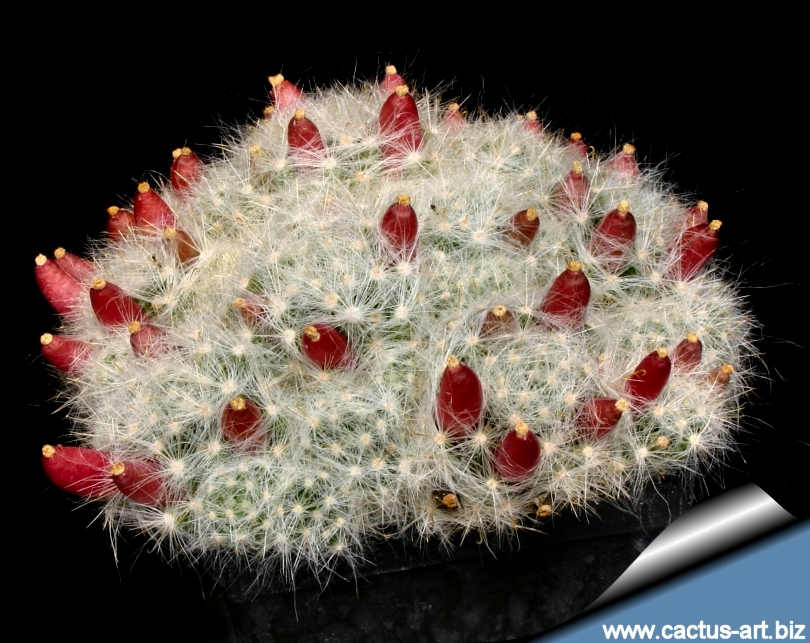
M. glassii is a sweet little
mat
forming plant, that offsets heavily
and forms a beautiful low white cushion. Flowers very small and pink for two months in Spring.
|
|
Description: It is a small rapidly clumping plant that forms
large, low clusters, with numerous basal branches, densely covered in
fluffy white spines.
Stems: Individual stems
are short, globose, becoming cylindrical, 3-10 cm
tall.
Tubercles: Cylindrical, up to 7 mm tall, with watery juice
(without latex).
Areoles: Circular, naked.
Axil: Furnished with10 to 20 fine, white bristles, up to 25 mm
long or almost naked..
Radial spines: 50 - 60, hairlike, white, interlacing, 10 - 15 mm
long,
Central spines: 1 to 4, up to 7 mm long, erect, straight or
hooked, but difficult to distinguish from radials.
Flower: Very small, funnel shaped, often not opening completely,
creamy-yellow to light pink, up to 14 mm long,
3-22 mm across.
Blooming season: It one of the
earliest mammillarias to flower in spring.
Fruit: Protruding, very ornamental green,
becoming pink-reddish, up to 20 mm long.
Seeds: Black.
Roots: Fibrous.
Suggested subspecies and variety:
-
M. glassi ssp.
glassii Stems very small, not
exceeding 3 cm in diameter, whit numerose axilary bristles and usually
only one central spine. Flowers very tiny, narrow (approx 3-4 mm in
diameter). Origin: Coahuila, Tamaulipas and Nuevo Leon.
-
M. glassii ssp.
ascensionensis Stems are larger (Up to 10 cm in diameter) axil
almost naked withshort wool and few (If any) bristles. Centrla spines
7-7 mm long, flowers larger up to 18-22 mm whide. Origin: Ascension,
Nuevo leon.
-
M.glassii var.
siberensis Clumping, heads up to 10 cm in diameter. Floers,
white to pale pink, over 2,5 cm across . Origin: Near the town of
Siberia in Nuevo Leon
-
M. glassi var.
nomini-dulcis. Flowers very large up to 3 cm in diameter.
|
|
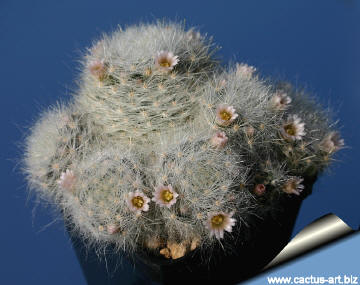
Mammillaria glasii 'Dulces Nombres'
(with short yellow hooked spines)
(Field number: L 1537 track from Dulces Nombres over Santa
Engracia, Tamaulipas, Mexico 1800 m ) |
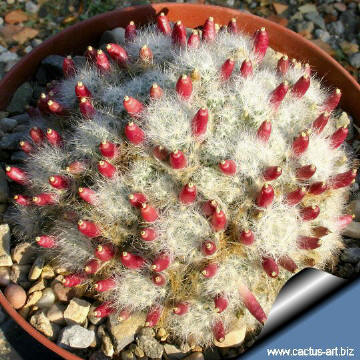 |
|
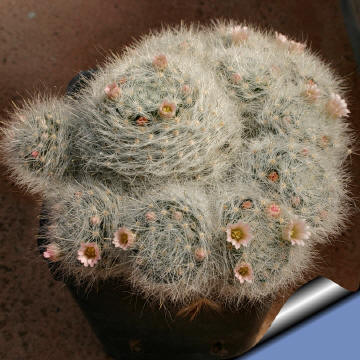 |
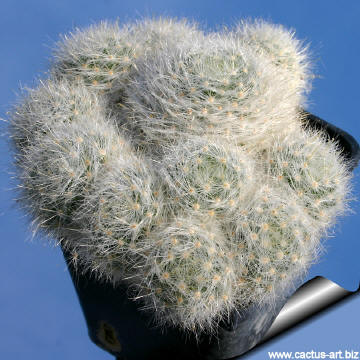 |
|
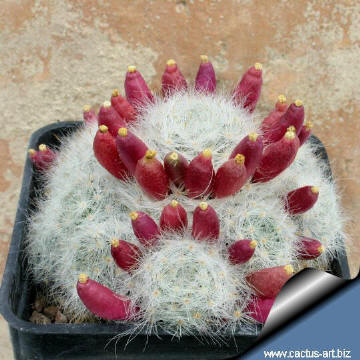 |
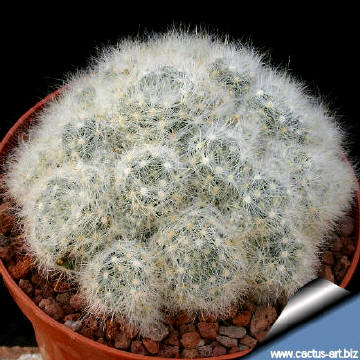 |
|
Advertising
|
|
|
|
|
Family:
Cactaceae (Cactus
Family)
Scientific name: Mammillaria glassii var. glassii R.A. Foster
Pubblicated in: R.A. Foster, Cact. Succ. J. (US)
40(4): 132 (1968)
Series: STYLOTHELAE
Origin: Sierra. Madre Oriental, Coahuila, Tamaulipas and Nuevo
Leon, Mexico Altitude 1.450 - 2.250 m.
Conservation status: Listed in
CITES appendix 2.
Synonyms:
- Mammillaria glassii subsp. glassii
- Bartschella glassii
- Mammillaria ascensionensis
Reppenhagen 1979
- Mammillaria glassii subsp. ascensionensis
(Reppenhagen) D.R. Hunt 1997
- Mammillaria glassii var. siberiensis
Lau
- Bartschella glassii ssp. siberiensis
- Mammillaria glassii var. nominis-dulcis
|
|
|
|
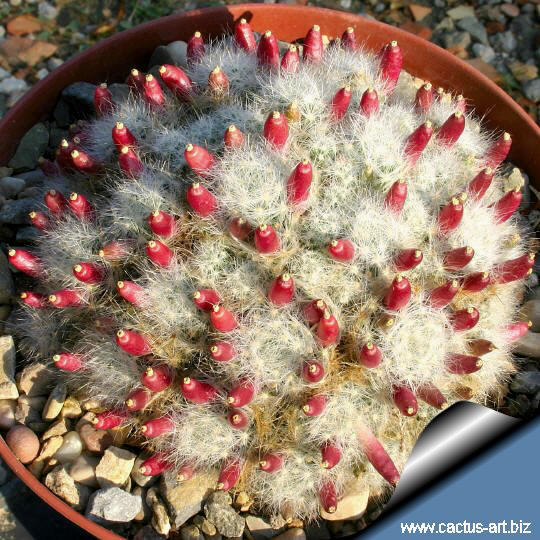
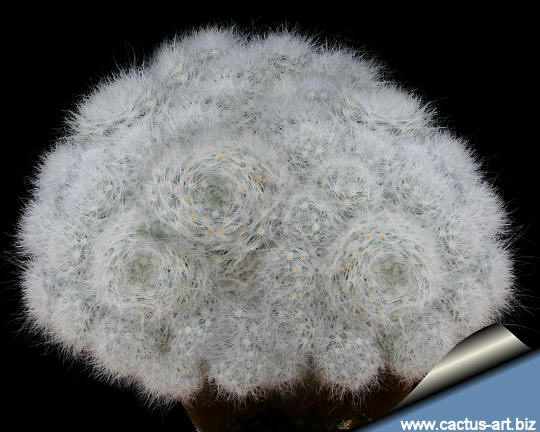 |
|
Cultivation: It is a slow growing species
of easy culture, recommended for any collection, it doesn't require any
special treatment. Water regularly in summer, but do
not overwater (Rot prone)
Use pot with good drainage and a very porous potting media,
keep dry in winter.
Feed with a high potassium
fertilizer in summer.
It is quite frost resistant if kept dry, hardy as low as -5° C (some
reports give it hardy to -5°C)
Sun Exposure: It needs as
much light as possible without burning the plant, to encourage the
heaviest spine formation. Growth and flowering are improved under these
conditions.
Can be sunburned if moved
from shade/greenhouse into full sun too quickly. During the spring it
may be able to take full sun until the heat arrives at the end of
spring. In an area that has hot afternoon sun, it may be able to take
full morning sun, but requires afternoon shade or afternoon light shade.
It readily forms clumps of many small heads
and flowers easily.
For best results, use a shallow pot, and only use the smallest
diameter pot that will accommodate the plant. Regular water in summer,
dry in winter. The use of a covering gravel is a good way to preserve
the whiteness of spines.
Propagation: Direct sow after last frost
(usually) or division, wait
until the
offsets that appear at the
base of old clustered
specimens
are 1/3 the size of the parent and then detach and plant.
|
|
Photo of conspecific taxa, varieties, forms and
cultivars of Mammillaria glassi:

 |
|